Understanding RJ45 and 8P8C Connectors
2024-07-11
4099
Catalog

Figure 1: RJ45 Connector AKA “8P8C”
The Beginnings of RJ45
The term "RJ45" is both widely recognized and frequently used in the context of Ethernet cables. "RJ" stands for "registered jack" – a specific type of connector developed for standardized telecommunication network interfaces. The genuine RJ45 connector was created to facilitate connections within telephone networks, offering a compact & cost-effective alternative to older methods that used hardwired cords or bulky plugs. This innovation reduced the complexity and expense of telephone network installations. It paves the way for more efficient communication infrastructures.
The development of the RJ45 connector marked a moment in telecommunications. Its design incorporated a smaller plastic housing, making it easier to handle than previous connectors. This compact design allowed for a higher density of connections. The connector's internal structure featured gold-plated contacts, providing reliable and corrosion-resistant electrical connections that ensured consistent performance over time. This was a stark contrast to older connectors that often suffered from signal degradation due to corrosion and wear. In practical terms, the RJ45 connector simplified the installation process. Installers could quickly strip the cable jacket, untwist the wire pairs, and insert them into the connector's slots, following a standardized wiring scheme. The design ensured each wire made a secure contact, reducing the likelihood of poor connections that could disrupt communication. Once the wires were in place, a crimping tool pressed the contacts into the wires to secure the connector to the cable. This operation, while simple, required precision plus care to ensure optimal performance.
Misconceptions of “8P8C” from “RJ45” Connectors
The term 8P8C, standing for Eight Position, Eight Contact, refers to the specific pin configuration in these connectors. Each 8P8C plug has eight positions spaced about one millimeter apart, where individual wires are inserted. Among various 8P8C connectors, the modern RJ45 Ethernet connector is the most prevalent. Despite technical differences between 8P8C and RJ45 connectors, their physical similarities have led to the widespread. Though incorrect, use of "RJ45" as a blanket term for any eight-pinned (8P8C) modular connector used in computer networking.

Figure 2: 8P8C vs. True RJ45 Connectors
How can they be differentiated? The major difference between 8P8C and true RJ45 connectors lies in compatibility. While 8P8C connectors can be inserted into RJ45 receptacles, the reverse is not true due to the specific keying of RJ45 connectors. This difference contributed to the confusion and misnaming. During this period, many professionals mistakenly referred to unkeyed 8P8C connectors as "RJ45s." This misnomer quickly spread throughout the industry, leading to nearly all electronic equipment documentation now referring to 8P8C connectors as RJ45 connectors, despite the technical inaccuracy. The widespread adoption of incorrect terminology persists because it simplifies communication within the industry. Both users & professionals continue to use the term "RJ45" to refer to 8P8C connectors to avoid confusion and debate. This practice has become deeply entrenched, making it unlikely to change soon. Understanding this common misconception highlights the importance of clear and accurate terminology in technical fields. Acknowledging the origins of these terms and their misapplications allows industry professionals to better navigate the complexities of networking technology.
Practically speaking, the confusion between 8P8C and RJ45 can lead to challenges during installation or even troubleshooting. Technicians must ensure they use the correct connector type to maintain network integrity. When working with these connectors, precise alignment of the wires within the 8P8C configuration is required. Each wire must be inserted into its designated position, following the color-coded scheme of the T568A or T568B standards. This meticulous attention to detail ensures that the electrical connections are secure and that the network operates efficiently.
RJ45 Components
RJ45 connectors' major components include plastic housing and gold-plated contacts that provide extreme resilience. These housings encase the gold-plated contacts, ideal for interfacing with the eight wires in an Ethernet cable. Gold plating is remarkable because gold is an excellent conductor of electricity and is corrosion-resistant. The contacts within an RJ45 connector are designed to accommodate different types of cables. Two-prong contacts are typically used for stranded cables. These contacts are more flexible and better suited for applications where the cable may be frequently moved or bent. In contrast, three-prong contacts can be used with both solid and stranded wires, offering greater versatility and a more stable connection. This design flexibility is required to ensure the connector can securely interface with the cable, regardless of its specific construction. When preparing an RJ45 connector for installation, the technician must strip the cable jacket and untwist the wire. Each wire is then inserted into its respective slot within the connector, ensuring that the exposed copper makes contact with the gold-plated pins. The crimping tool is used to press the contacts into the wires, securing them in place and establishing a reliable connection. This process requires precision, as any misalignment can result in poor connectivity and network performance issues.

Figure 3: Basic RJ45 Connector Components
To maintain a secure connection, RJ45 connectors are equipped with strain and retaining latches. The strain latch ensures that the connector snaps firmly into place, preventing it from loosening over time, which is particularly used in environments subject to physical stress or movement. Installing an RJ45 connector with a strain latch typically requires specific crimping tools to ensure a proper fit. The retaining latch, on the other hand, prevents the network cable from inadvertently disconnecting. When inserting or removing the modular plug, the retaining latch must be pressed to release the connection, adding an extra layer of security.
RJ45 Connector Pinout Configuration
RJ45 connectors adhere to two standard pinout configurations, “T568A and T568B” These define the arrangement of the eight wires within the connector. Each wire is color-coded with specific stripe and solid combinations—brown, green, orange, blue, or white. This color coding is ideal for maintaining consistency and compatibility across different network installations. The T568A and T568B standards were established to provide a universal approach to wiring, ensuring that cables and connectors from different manufacturers would be interoperable.

Figure 4: RJ45 Connector Pinout Configuration (T568A and T568B)
RJ45 Connector Models
To meet the diverse needs of network installations, RJ45 connectors come in various types, including Cat5e, Cat6, Cat6a, and Cat7. Each type is designed to be compatible with specific categories of network cables, ensuring they meet particular performance requirements & applications—whether for home networks, office settings, or large-scale data centers.
Non-Pass-Through vs. Pass-Through

Figure 5: Non-Pass-Through (A) vs. Pass-Through (B)
Traditional RJ45 connectors are referred to as non-pass-through connectors and are commonly known as 8P8C modular plugs. These connectors are widely used and recognized for their traditional design. Its design is where the cable wires are inserted into the connector body and terminated within it. To prepare a standard RJ45 connector, the technician strips the outer jacket of the Ethernet cable, untwists the pairs, and arranges the wires according to the wiring standard. The wires are then trimmed to the correct length and inserted into the connector, where they are crimped to establish contact. Pass-through RJ45 connectors, however, allow the network cable wires to pass through the connector body. This design feature simplifies the alignment of wires before terminating the connectors, making the process more straightforward for novices or DIY enthusiasts. Pass-through connectors offer ease of use by allowing visual verification of the wire order before crimping. Although they require specific crimping tools, the benefit of ensuring the wires are correctly aligned before termination reduces installation errors and improves reliability.
Shielded vs Unshielded

Figure 6: Shielded (A) vs Unshielded (B)
Another major distinction in RJ45 connectors is between shielded and unshielded models. Unshielded RJ45 connectors feature plastic housings. They are typically used in environments where electromagnetic interference (EMI) is minimal. Conversely, shielded RJ45 connectors are equipped with metal shielding designed to prevent EMI. This shielding is ideal in environments with high levels of electronic noise, such as industrial settings or areas with dense electronic equipment.
Standard vs Toolless

Figure 7: Standard (A) vs Toolless (B)
Standard RJ45 connectors require the use of professional crimping tools for proper termination. These tools are used to ensure that the connectors are securely attached to the cables, therefore, providing a reliable connection. The process involves stripping the cable, arranging the wires in the correct order, and using the crimping tool to press the contacts into the wires. This method, while effective, requires precision and proper technique to avoid connection issues. In contrast, toolless RJ45 connectors can be terminated without the need for such tools, offering a convenient solution for field termination and quick connections. Toolless connectors are particularly useful in situations that demand frequent cable movement. This flexibility makes toolless connectors ideal for dynamic environments and emergent situations, where quick reconfiguration of network connections is required.
Single-Piece vs Two-Piece

Figure 8: Single-Piece (A) vs Two-Piece (B)
Single-piece RJ45 connectors consist of a single housing unit into which the cable wires are inserted and terminated. This design, while effective, can sometimes make wire alignment challenging, particularly for less experienced technicians. Ensuring that each wire is correctly placed and fully inserted can be difficult without the ability to adjust the wires once inside the connector. Two-piece RJ45 connectors, however, include an additional load bar that helps align the eight wires, facilitating easier and quicker wiring. The load bar allows the wires to be arranged and secured before being inserted into the main connector body. This feature simplifies the installation process and enhances the connector's resistance to interference. By ensuring precise wire placement, the two-piece connectors provide a more stable & reliable connection.
Troubleshooting RJ45 Connectors Issues
Despite their robustness and major role in network infrastructure, RJ45 Connectors can still encounter several issues that disrupt network functionality. One of the most common problems stems from improper wiring sequences. Ensuring each wire is correctly placed according to the T568A/T568B standards is required. Miswiring can lead to connectivity problems or complete network failures. Technicians must meticulously follow these wiring standards to maintain network integrity and performance. This attention to detail is especially used when creating custom cables or repairing existing ones, as any deviation from the standard can result in major issues. Another frequent issue with RJ45 connectors involves the small plastic tab on the connector. This tab is designed to create a tight and secure connection between the cable and the port to avoid accidental disconnection. However, the tab's design also makes it susceptible to damage. If bent backward, the tab can easily snap off, leading to the cable slipping out of the port and causing connectivity issues. To avoid this, users should handle RJ45 connectors with care. In situations where the tab does break, the connector often needs to be replaced to restore a reliable connection.
Proper handling and installation of RJ45 connectors are required to prevent these issues. Using the correct crimping tools and techniques ensures that the contact pins are securely pressed into the wires to provide a stable, consistent connection. During the crimping process, it's used to ensure the wire pairs are fully inserted into the connector and that each wire reaches its corresponding contact. This prevents issues like intermittent connections or signal loss. Also, ensuring that the connectors and cables are compatible is required; mismatched components can lead to poor performance and frequent disconnections.
Regular maintenance and inspection of network cables and connectors can also help identify and resolve issues before they escalate. Checking for signs of wear and tear, such as frayed cables or damaged connectors, allows for timely replacements and prevents network downtime. In environments with heavy network traffic or physical movement, such as data centers or industrial settings, more frequent inspections might be prioritized to ensure continuous operation. Inspectors should look for common issues such as loose connections, bent tabs, and worn-out contacts, which can degrade network performance over time.
Environmental factors such as temperature, humidity, and electromagnetic interference (EMI) can also impact the performance of RJ45 connectors. Shielded connectors are often used in high-EMI environments to prevent data corruption and ensure reliable transmission. Ensuring that cables and connectors are rated for the specific conditions of their operating environment can mitigate these risks. For example, using connectors with appropriate temperature and humidity ratings can prevent degradation over time. In high-temperature environments, connectors designed to withstand thermal expansion can maintain stable connections. While in humid conditions, these moisture-resistant connectors can prevent corrosion. Training and educating network technicians on the proper handling, installation, and maintenance of RJ45 connectors is used for minimizing issues. Providing comprehensive training on wiring standards, proper use of tools, and best installation practices can reduce common problems. Technicians should be well-versed in resolving common issues, such as miswiring & damaged tabs.
Factors to Consider When Selecting an RJ45 Connector
Selecting the appropriate RJ45 connector is required for maintaining a reliable and efficient structured cabling system. High-quality RJ45 connectors are characterized by their bright, transparent, and smooth housings, typically made from materials with low thermal expansion coefficients, such as polycarbonate (PC). These materials provide accurate sizing and excellent stability, ensuring a consistent plus secure connection. Although PC is commonly used, the housing color can vary, so it is not always a reliable indicator of quality. One practical method to assess the quality of a batch of connectors is by checking the sound they make when shaken; a clear, crisp sound usually indicates high material density and purity
The integrity of the retaining latch is another major factor. A high-quality retaining latch should withstand multiple bends without breaking, ensuring that the connector remains securely attached to the cable. This durability is particularly substantial in environments where cables are frequently moved or reconnected. Testing the flexibility and resilience of the latch can help determine the overall quality of the connector. A practical test involves bending the latch back and forth several times to ensure it returns to its original position without signs of weakening. Also, the contact pins within the RJ45 connector play a major role in its performance. High-quality connectors use bronze or phosphor bronze contact pins, ideally plated with 50 microns of gold. This gold plating enhances durability and provides resistance to corrosion, ensuring a stable and reliable electrical connection over time. Conversely, poor-quality contact pins, often made from solid copper, can oxidize and degrade, leading to performance issues. Inspecting the thickness of the gold plating and the material composition of the pins can help identify the best quality connectors. When selecting RJ45 connectors, it is recommended to consider the category of Ethernet cables being used. Different categories such as CAT6 or CAT6A have specific requirements that must be met by the connectors to ensure compatibility. For instance, pass-through RJ45 connectors are recommended for certain cable types because they allow for easier alignment and wire termination.
Purchasing connectors from various reputable vendors is advisable to ensure compatibility and performance. It is also beneficial to buy more connectors than required, as this allows for testing and ensures that any faulty units can be replaced without causing delays. Different production processes can result in slight variations in the size of network cable wires, so checking the specifications of the RJ45 connectors to see the diameter of cables they can accommodate is required. Testing a few connectors with the actual cables in use can help verify compatibility and performance.
Conclusion
Understanding the differences between RJ45 and 8P8C connectors is required for anyone involved in computer networking. The RJ45 connector, originally developed for telephone networks, has evolved to meet the needs of modern data transfer. As a result, the 8P8C connector is now popularly used. Despite their technical distinctions, the widespread adoption of the term "RJ45" for 8P8C connectors has simplified industry communication. However, recognizing the correct terminology and ensuring precise installation practices are perfect for maintaining network integrity and performance.
Frequently Asked Questions [FAQ]
1. What is the common name for the 8P8C connector?
The common name for the 8P8C connector is "RJ45." Although "RJ45" technically refers to a specific type of connector used in telecommunications, it has become widely used to describe the 8P8C connectors found on Ethernet cables.
2. Are the same 8P8C RJ45 modular connectors used for both solid and stranded cables?
No, the same 8P8C RJ45 modular connectors are not always used for both solid and stranded cables. Connectors are often specifically designed for one type or the other. Two-prong connectors are typically used for stranded cables due to their flexibility, while three-prong connectors can be used for both solid and stranded cables, offering a more stable connection.
3. Does it matter what RJ45 connector I use?
Yes, it does matter what RJ45 connector you use. The choice depends on factors like the type of cable (solid or stranded), the environment (shielded or unshielded to prevent interference), and the specific application (standard, pass-through, toolless, or two-piece connectors). Using the correct connector ensures optimal performance and reliability of the network.
4. What is the difference between RJ45 and RJ50 connectors?
The primary difference between RJ45 and RJ50 connectors is the number of pins. RJ45 connectors have 8 positions and 8 contacts (8P8C), while RJ50 connectors have 10 positions and 10 contacts (10P10C). RJ50 connectors are used for applications that require more connections, such as some types of telecommunication equipment and proprietary networking systems.
5. What is the difference between RJ45 and Ethernet connector?
The term "RJ45" specifically refers to the 8P8C connector used on Ethernet cables, whereas "Ethernet connector" is a broader term that can refer to any connector used in Ethernet networking, including RJ45. Basically, all RJ45 connectors are Ethernet connectors, but not all Ethernet connectors are RJ45 connectors.
 ABOUT US
Customer satisfaction every time. Mutual trust and common interests.
ABOUT US
Customer satisfaction every time. Mutual trust and common interests.
function test. The highest cost-effective products and the best service is our eternal commitment.
Hot Article
- Are CR2032 and CR2016 Interchangeable
- MOSFET: Definition, Working Principle and Selection
- Relay Installation and Testing, Interpretation of Relay Wiring Diagrams
- CR2016 vs. CR2032 What’s the difference
- NPN vs. PNP: What's the Difference?
- esp32 vs stm32: which microcontroller is better for you?
- LM358 Dual Operational Amplifier Comprehensive Guide: Pinouts, Circuit Diagrams, Equivalents, Useful Examples
- CR2032 VS DL2032 VS CR2025 Comparison Guide
- Understanding the Differences ESP32 and ESP32-S3 Technical and Performance Analysis
- Detailed Analysis of RC Series Circuit
 Comprehensive Guide to the LM393 Low-Power Dual Voltage Comparator
Comprehensive Guide to the LM393 Low-Power Dual Voltage Comparator
2024-07-11
 Choosing the Right Battery: Detailed Review of the LR1130
Choosing the Right Battery: Detailed Review of the LR1130
2024-07-11
Hot Part Number
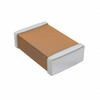 CL05A106MR5NRNC
CL05A106MR5NRNC GRM188R71C153KA01D
GRM188R71C153KA01D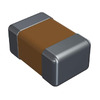 08052A470JAT2A
08052A470JAT2A 04023D223KAT2A
04023D223KAT2A CL21C4R7BBANNND
CL21C4R7BBANNND 0402YA390KAT2A
0402YA390KAT2A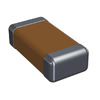 1206ZD335MAT2A
1206ZD335MAT2A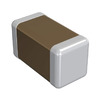 GRM1555C1H101JZ01J
GRM1555C1H101JZ01J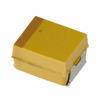 TAJT685K020RNJ
TAJT685K020RNJ ISD4002-120EY
ISD4002-120EY
- IS42RM16160D-7BLI
- MMPF0100NPAZESR2
- VI-J43-CX
- LTC3561EDD#PBF
- AD9835BRU
- ADS1120IPW
- TPS53511RGTT
- STM8AF5286UAY
- AD7547KP
- MP5403GQBU-Z
- VNLD5090TR-E
- LT4356IS-1#PBF
- ADM1032ARMZ-REELT
- AS7C1026B-12JC
- BCM54640B0KFBG
- CY62137CV18LL-70BAIT
- HD6412363VF33V
- LC4256V-3FT256A-5I
- M1575-A1C
- MAX5839AEMH
- PEF22627EV1.2-G
- SI3000-XS2R
- STI7109CWC
- TC55257DFTL-85L
- MCR03EZP5J102
- MFI341S2313
- Z1031AI
- RTL8316CP-GR
- S29GL512P10FFSS70
- S29PL064J60BFI12
- UPD70F3263GC-B500-8EA
- STM8L152K4T6TR
- XC3142A-4PC84C
- VI-22W-04
- GCM21BR71H104K
- TL072HIDR
- ESP-WROOM-32E 8M
- CA-IS3052G
- TEN20-4823WIN